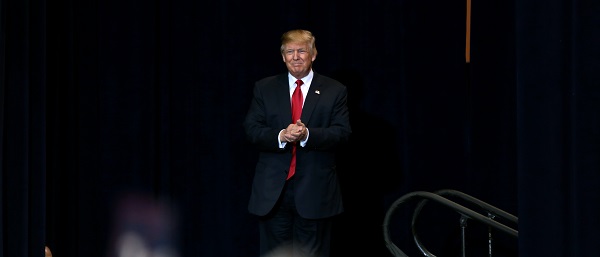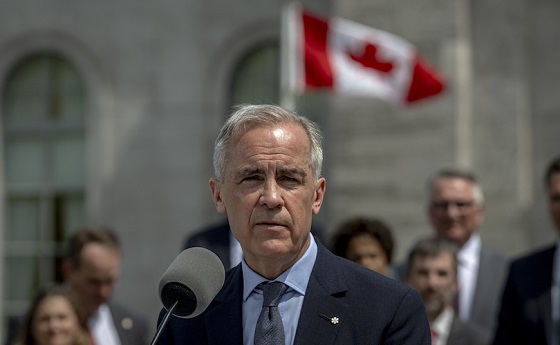conflict
Trump Taps Keith Kellogg For Key Ukraine Peace Role

 From the Daily Caller News Foundation
From the Daily Caller News Foundation
President-elect Donald Trump announced Wednesday that he’s appointed retired Lt. Gen. Keith Kellogg, a former national security aide, as a special envoy to Russia and Ukraine.
In a post on Truth Social, Trump praised Kellogg’s long-standing loyalty and his ability to “secure PEACE THROUGH STRENGTH, and Make America, and the World, SAFE AGAIN!” Trump said Kellogg has a “distinguished military and business career.”
“I am very pleased to nominate General Keith Kellogg to serve as Assistant to the President and Special Envoy for Ukraine and Russia. Keith has led a distinguished Military and Business career, including serving in highly sensitive National Security roles in my first Administration,” Trump said.
During Trump’s first term, Kellogg served as the National Security Council’s chief of staff and as national security adviser to former Vice President Mike Pence, CBS News reported. With Trump about to re-enter the White House, the future of U.S. engagement in the Ukraine conflict remains uncertain.
Kellogg is co-chairman of the America First Policy Institute’s Center for American Security and has authored several chapters of the institute’s policy book, The Associated Press reported. This publication, akin to the Heritage Foundation’s Project 2025, aims to craft a Trump-era national security strategy, correcting the unpreparedness seen in 2016 when Trump first took office.
Kellogg previously advocated for an assertive America First approach to broker a peace deal and promptly conclude the Russia-Ukraine conflict, AP reported. He expressed his hope that the policy book will act as a practical, intellectual guide for implementing an America First national security strategy.
“It’s a grand strategy,” Kellogg said. “You don’t start with the policies first. You start with the strategies first. And that’s what we’ve done.”
Multiple sources report that Trump and businessman Elon Musk held a phone call with Ukrainian President Volodymyr Zelenskyy. During the conversation, Trump discussed the future U.S. support for Ukraine.
“We both want to see this end, and we both want to see a fair deal made,” Trump told reporters alongside Zelenskyy at a press conference in September. “It should stop and the president (Zelenskyy) wants it to stop, and I’m sure President Putin wants it to stop and that’s a good combination.”
The State Department said last week that the Biden administration intends to forgive approximately $4.7 billion in loans previously extended to Ukraine. However, several lawmakers are actively working to block this debt forgiveness, according to spokesman Matthew Miller.
Artificial Intelligence
AI Drone ‘Swarms’ Unleashed On Ukraine Battlefields, Marking New Era Of Warfare


From the Daily Caller News Foundation
Artificial intelligence-powered drones are making their first appearances on the battlefield in the Russia-Ukraine war as warfare creeps closer to full automation.
In bombardments on Russian targets in the past year, Ukrainian drones acting in concert were able to independently determine where to strike without human input.
It’s the first battlefield use of AI “swarm” technology in a real-world environment, a senior Ukrainian official and Swarmer, the company who makes the software, told the Wall Street Journal in a Tuesday report. While drones have increasingly defined modern battlefields, swarms until now had been confined to testing rather than combat.
“You set the target and the drones do the rest,” Swarmer Chief Executive Serhii Kupriienko told the WSJ. “They work together, they adapt.”
So far, the Swarmer technology has been used hundreds of times to target Russia assets, but was first used a year ago to lay mines on the front, the Ukrainian official told the WSJ. The software has been tested with up to 25 drones at once, but is usually utilized with only three.
Kupriienko told the WSJ that he was preparing to test up to 100 drones at once with the linking software.
A common arrangement used on the battlefield includes one reconnaissance drone to scout out the target and two explosive drones delivering the payload on target, the official told the WSJ.
While Western nations such as the U.S., France and the United Kingdom are also pursuing drone swarm technology, they have not deployed swarm technology on the battlefield the way Ukraine has, according to the WSJ. Currently, autonomous weapons are not regulated by any international authority or binding agreement, but ethical concerns around the technology has led many to call for increased regulation of weapons like the Swarmer system.
The Ukrainian Ministry of Foreign Affairs did not immediately respond to the Daily Caller News Foundation’s request for comment.
conflict
Trump Pentagon Reportedly Blocking Ukraine From Firing Western Missiles Deep Into Russia


From the Daily Caller News Foundation
The Department of Defense has spent months blocking the Ukrainian military from using American and British-made missiles to hit targets deep inside Russia, The Wall Street Journal reported Sunday, citing unnamed U.S. officials.
Undersecretary of Defense for Policy Eldridge Colby reportedly designed the procedure to review requests to carry out the long-range strikes with weapons that are either of U.S. origin or that require American intelligence or use components provided by the U.S., according to the WSJ. Secretary of Defense Pete Hegseth reportedly has the final say on whether Ukrainian forces can use the MGM-140 ATACMS (Army Tactical Missile System) to hit targets in Russia.
The reported blocks on missile strikes coincides with a Trump administration effort to broker a peace deal between Russia and Ukraine. A Pentagon spokesperson declined to comment further on the matter.
BREAKING: President Vladimir Putin reacts to B-2 Flyover pic.twitter.com/1mzVn7DxlW
— Jack Poso 🇺🇸 (@JackPosobiec) August 15, 2025
The Biden administration allowed Ukraine to carry out strikes with ATACMS in November, weeks after President Donald Trump won the 2024 election, the New York Times reported. Trump criticized the move during a December interview with Time magazine.
“It’s crazy what’s taking place. It’s crazy,” Trump said. “I disagree very vehemently with sending missiles hundreds of miles into Russia. Why are we doing that? We’re just escalating this war and making it worse. That should not have been allowed to be done.”
Trump and Russian President Vladimir Putin met in Alaska on Aug. 15 for a summit meeting during which Trump sought to secure a cease-fire in Russia’s war with Ukraine. As Trump greeted Putin, a B-2A Spirit stealth bomber and several fighters carried out a flyover of Elmendorf Air Force Base.
Trump met with Ukrainian President Volodymyr Zelensky and major European leaders on Aug. 18 to update them on the summit.
In July, Trump reached an agreement with NATO where members of the alliance would purchase weapons, including MIM-104 Patriot surface-to-air missiles, and donate them to Ukraine.
-

 Alberta8 hours ago
Alberta8 hours agoFrom Underdog to Top Broodmare
-

 International19 hours ago
International19 hours agoPrince Andrew banished from the British monarchy
-

 Alberta2 days ago
Alberta2 days agoNobel Prize nods to Alberta innovation in carbon capture
-

 Business1 day ago
Business1 day agoCanada’s attack on religious charities makes no fiscal sense
-

 Business18 hours ago
Business18 hours ago“We have a deal”: Trump, Xi strike breakthrough on trade and fentanyl
-

 Bruce Dowbiggin1 day ago
Bruce Dowbiggin1 day agoGet Ready: Your House May Not Be Yours Much Longer
-

 Crime18 hours ago
Crime18 hours agoCanada Seizes 4,300 Litres of Chinese Drug Precursors Amid Trump’s Tariff Pressure Over Fentanyl Flows
-

 National2 days ago
National2 days agoCanadian MPs order ethics investigation into Mark Carney’s corporate interests








